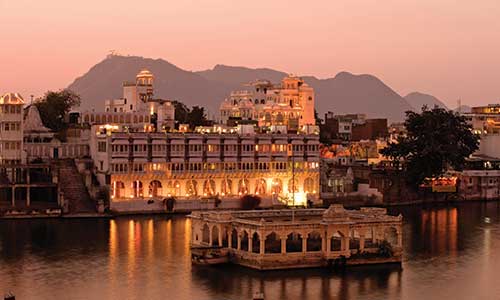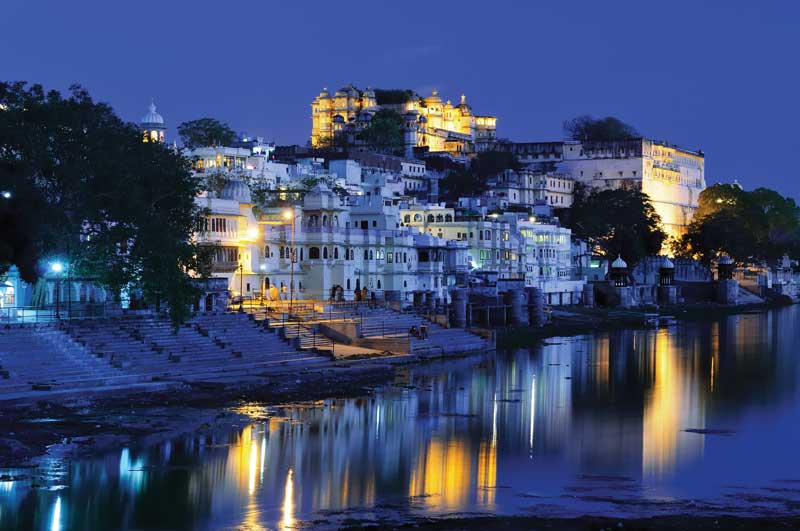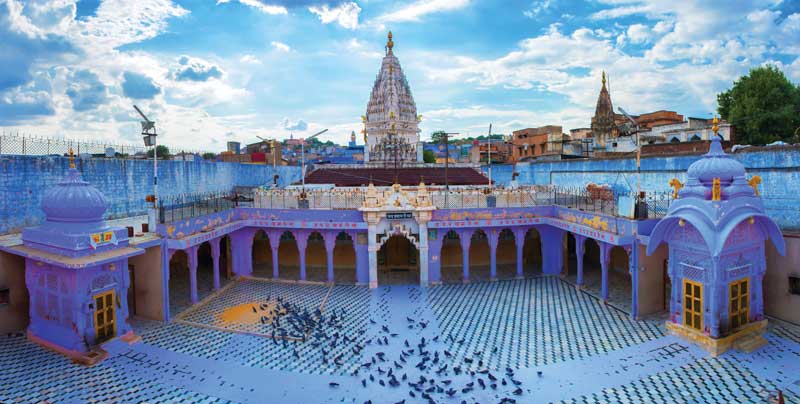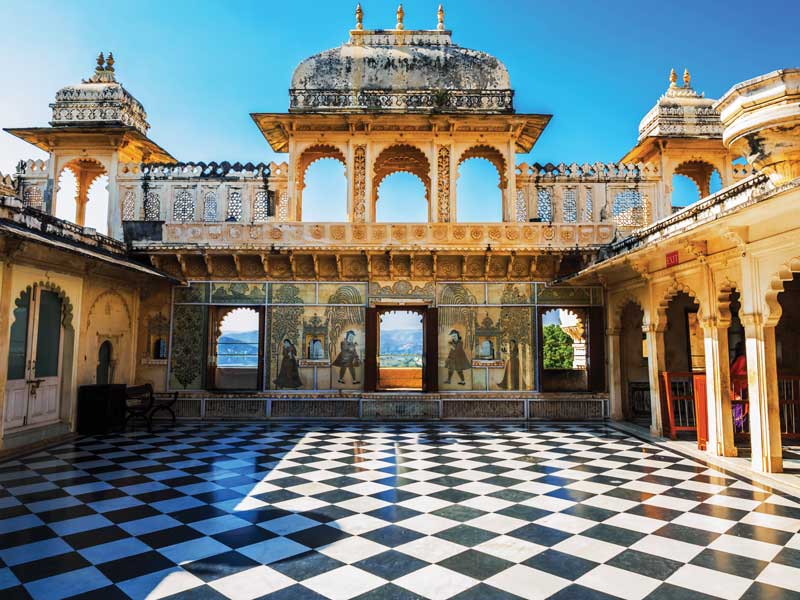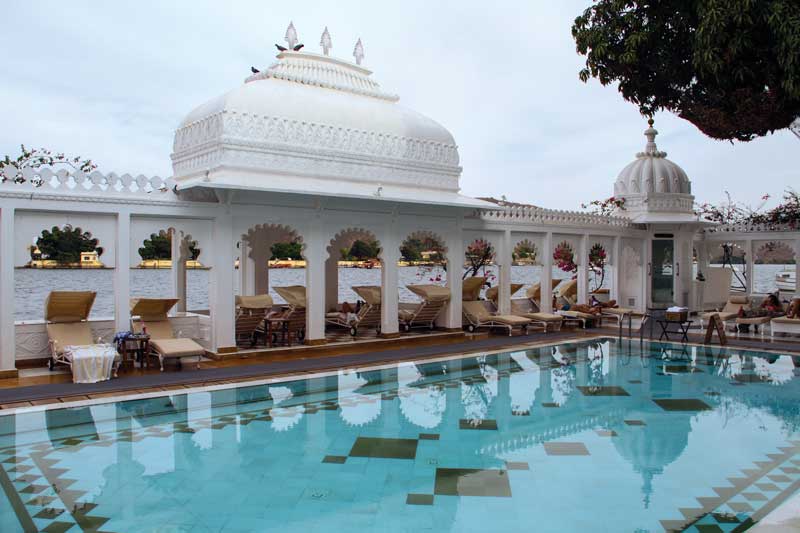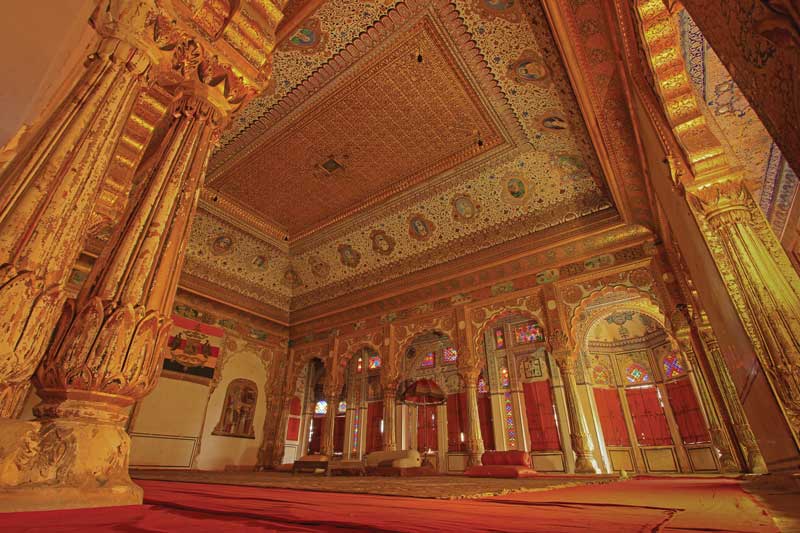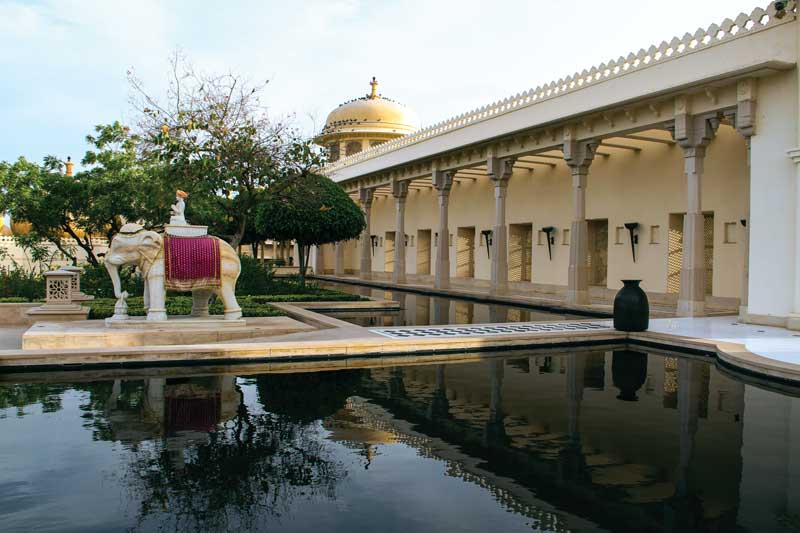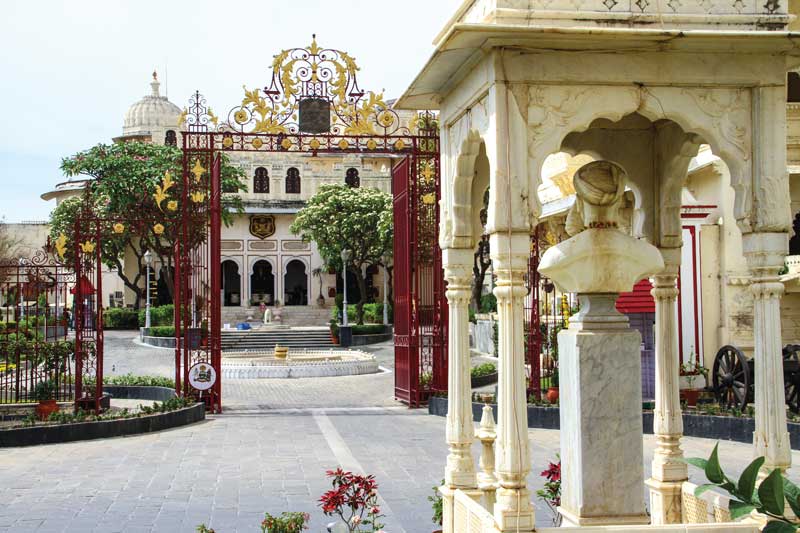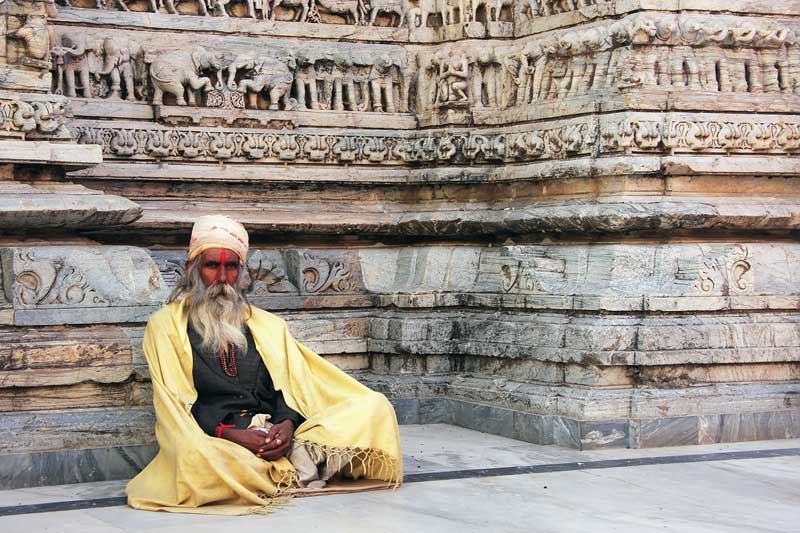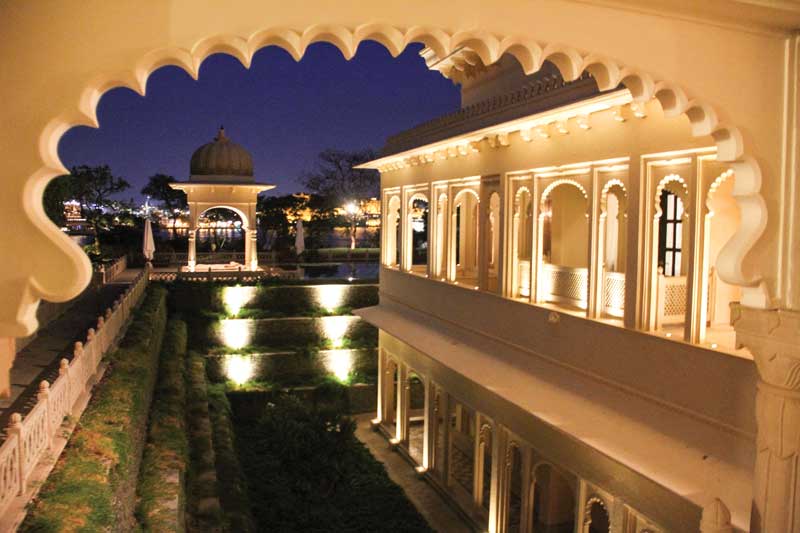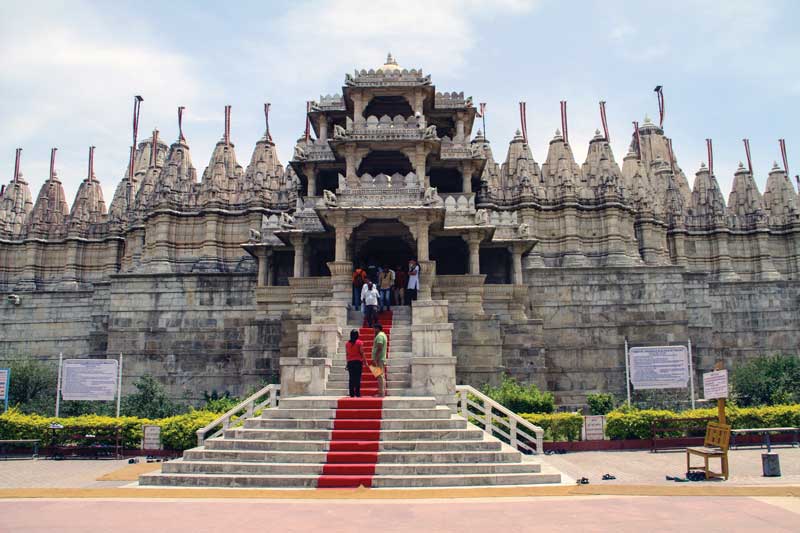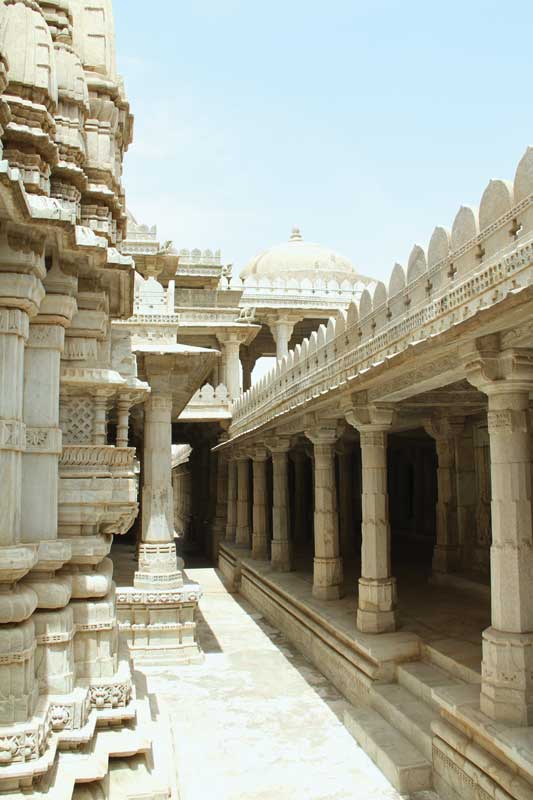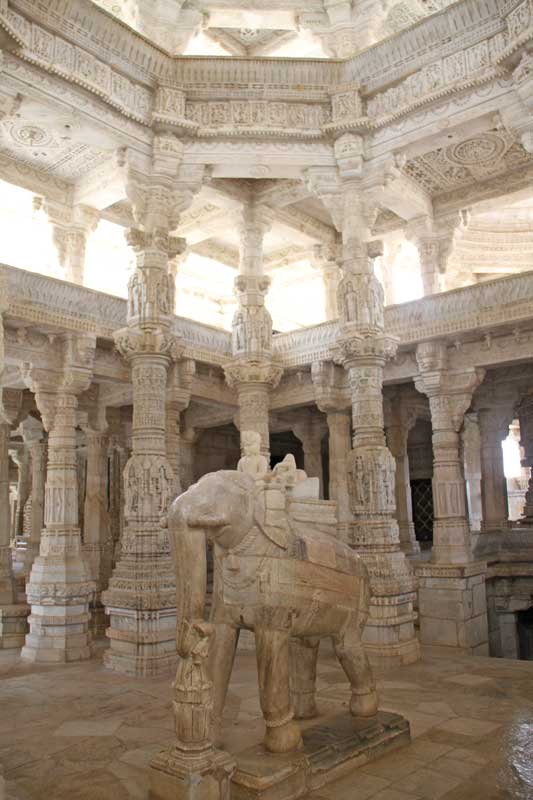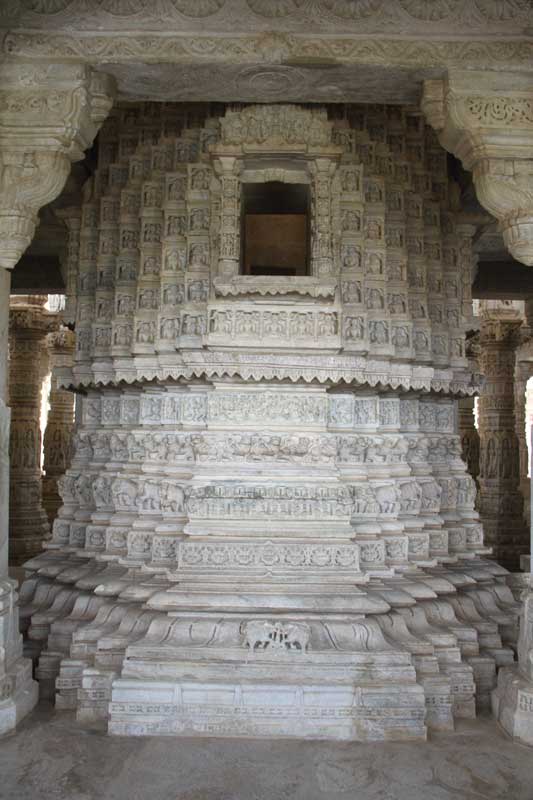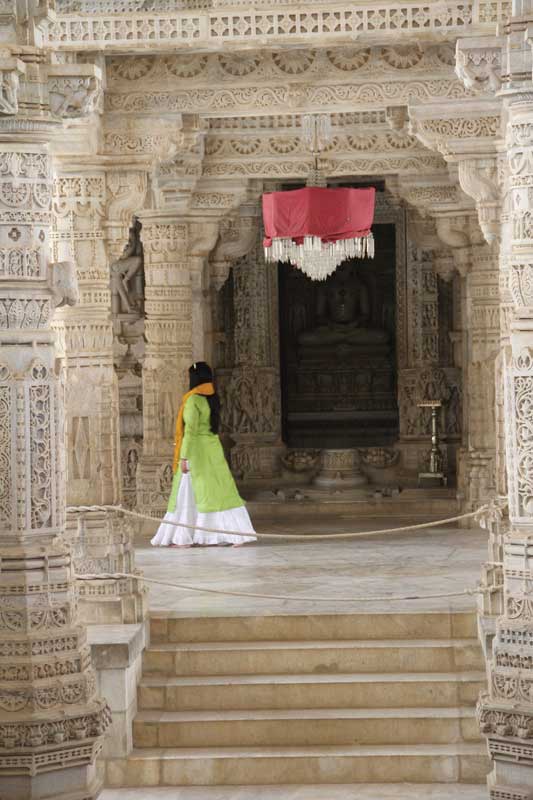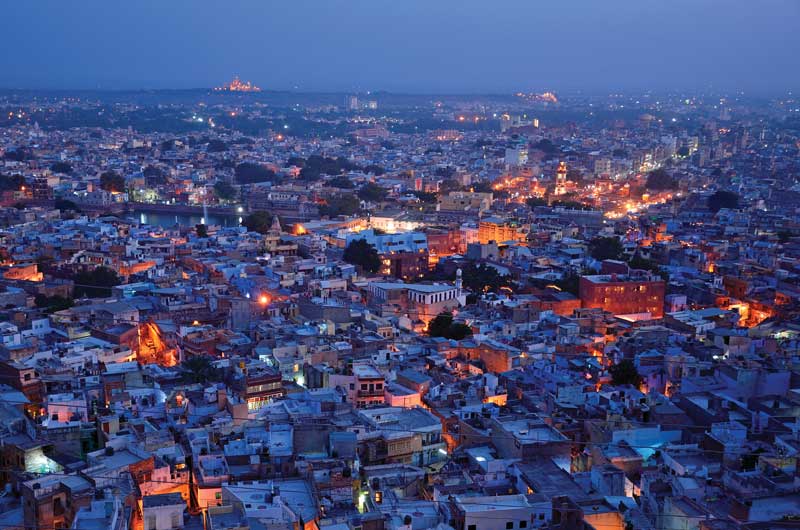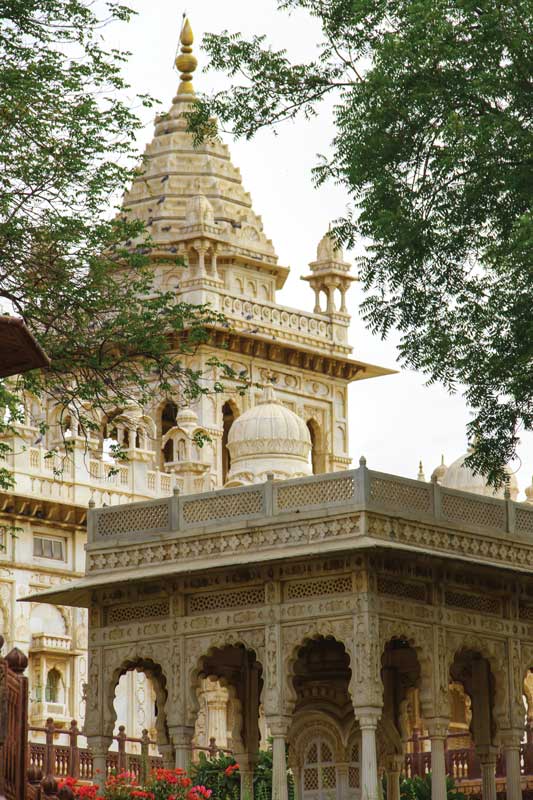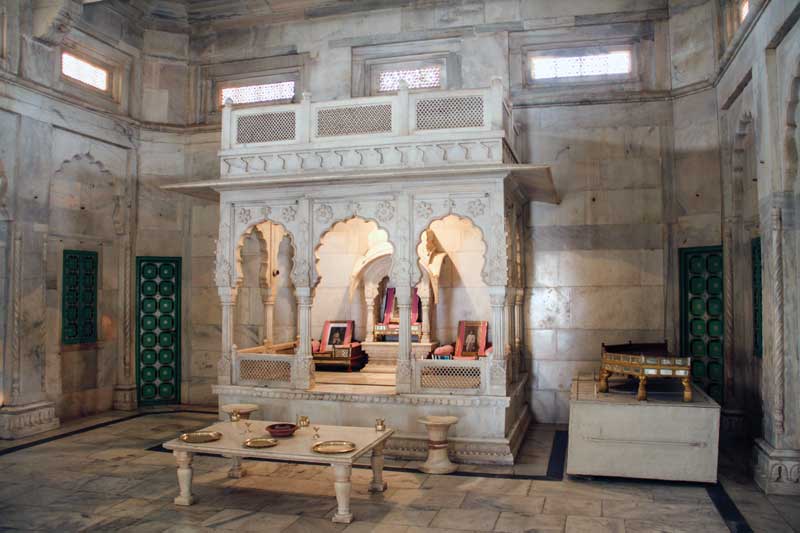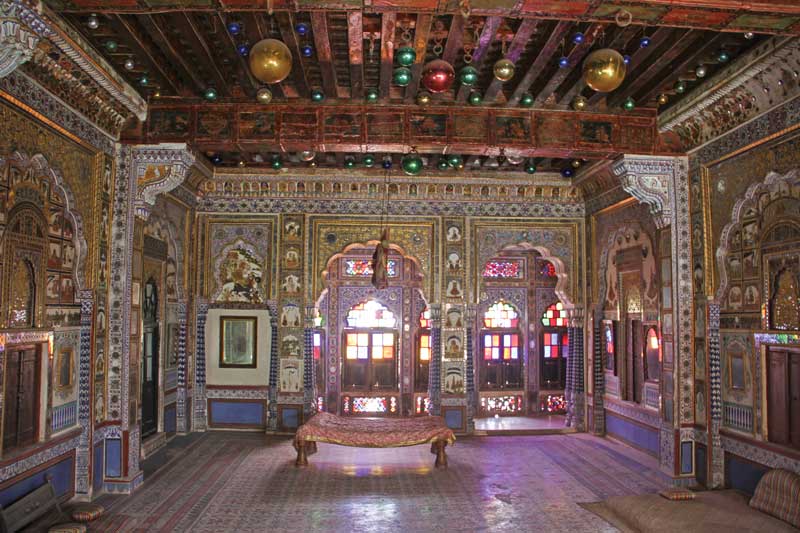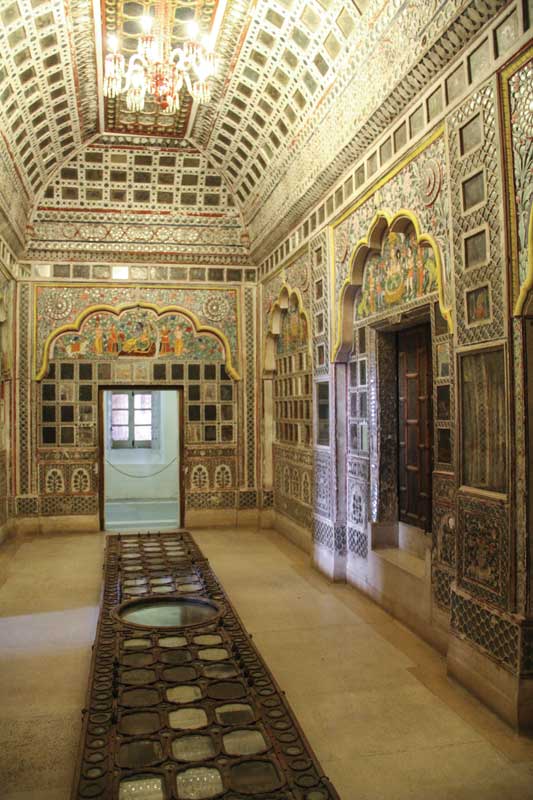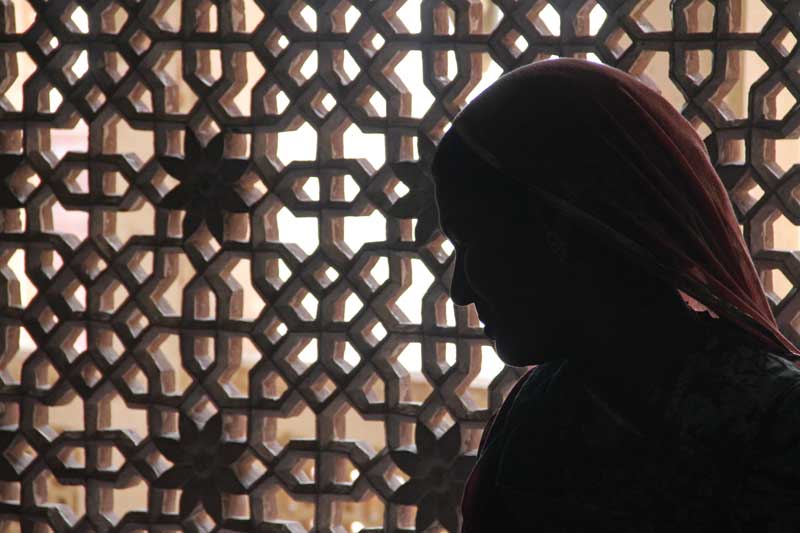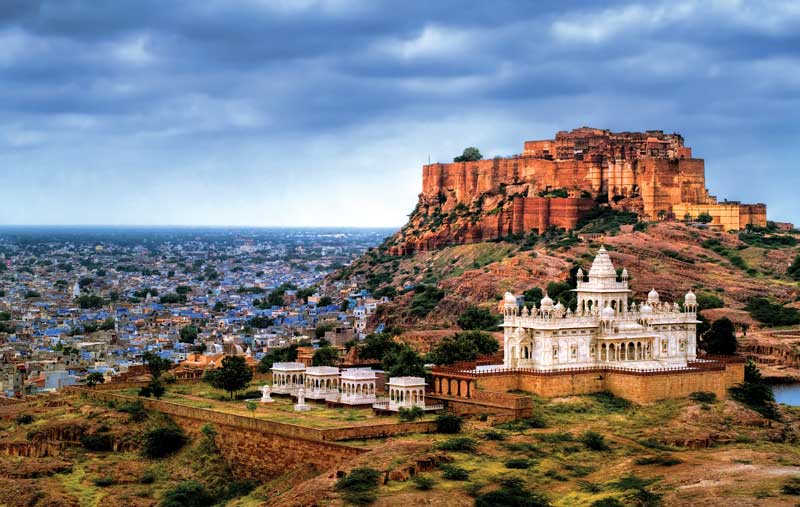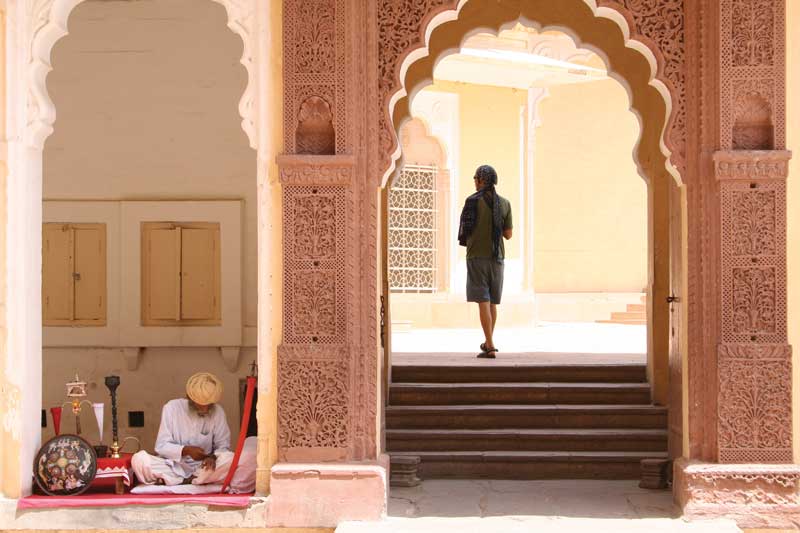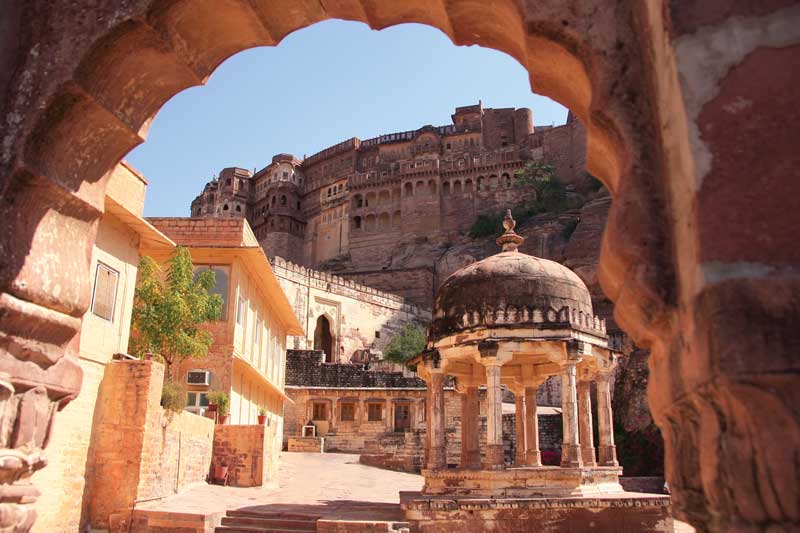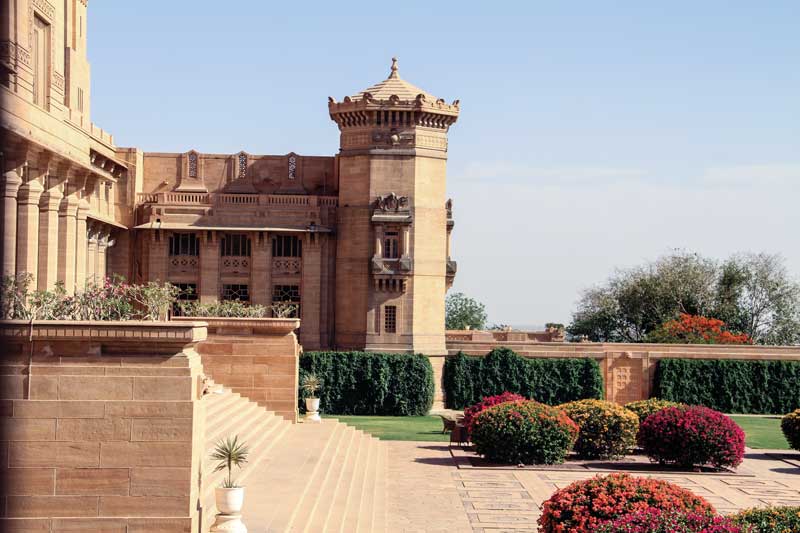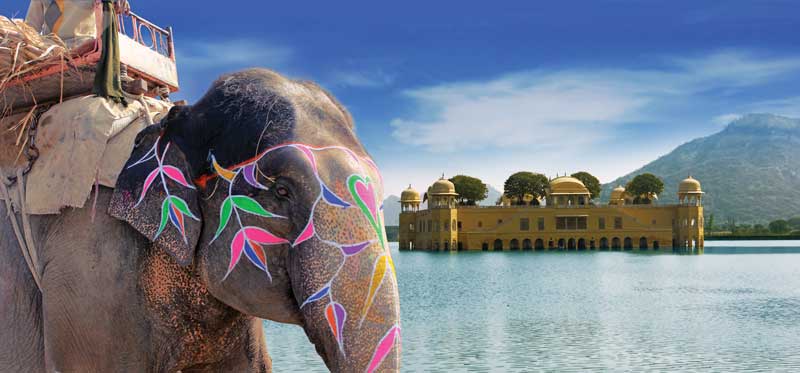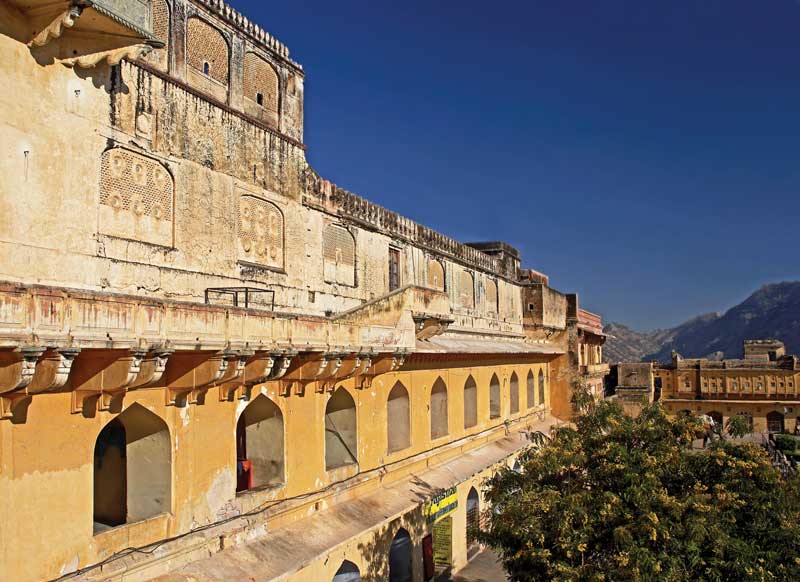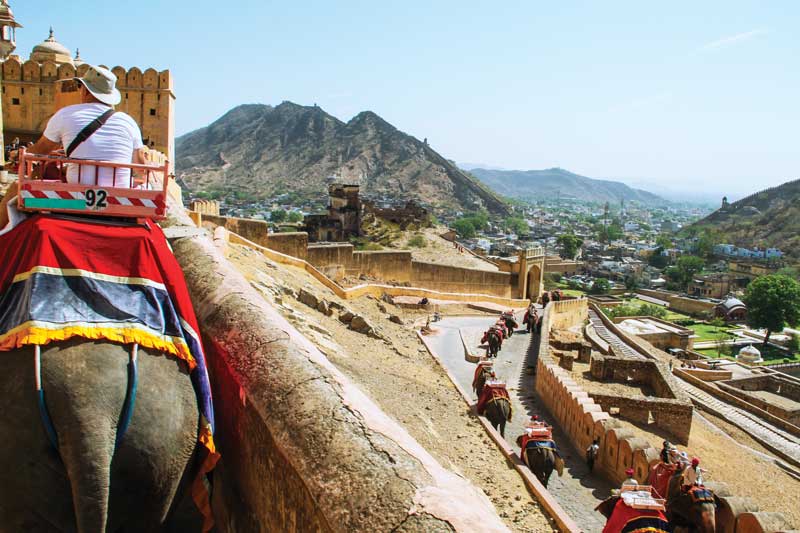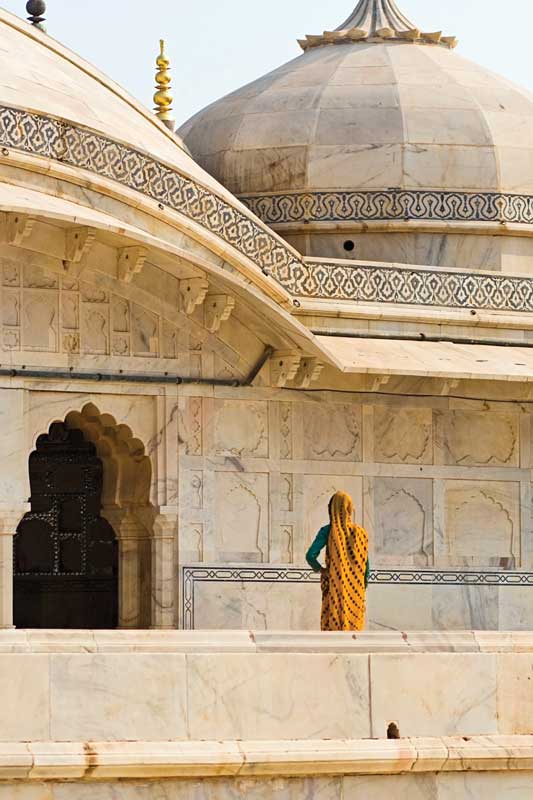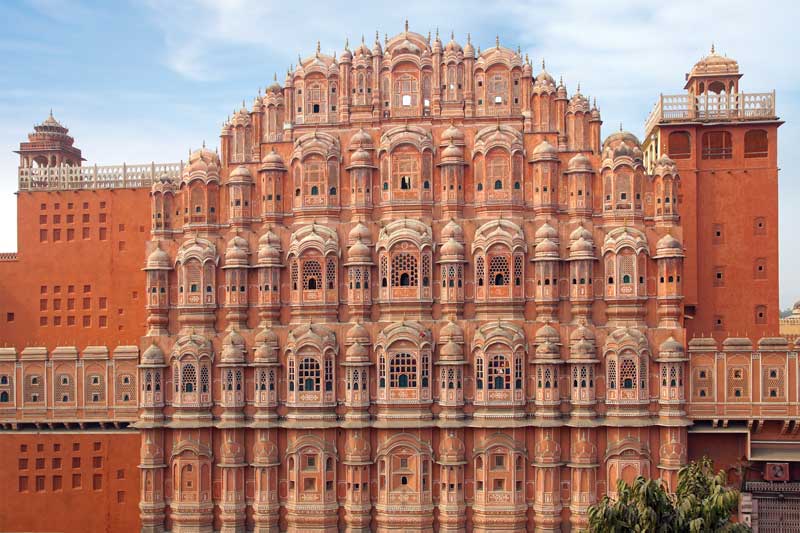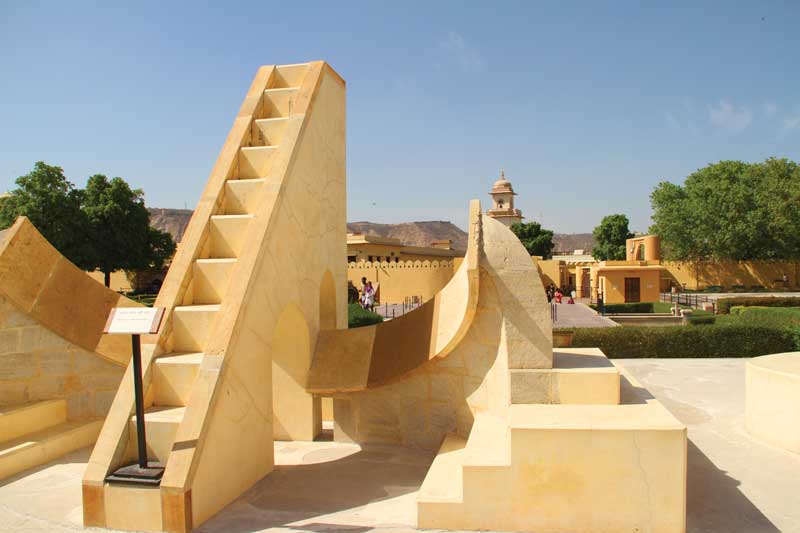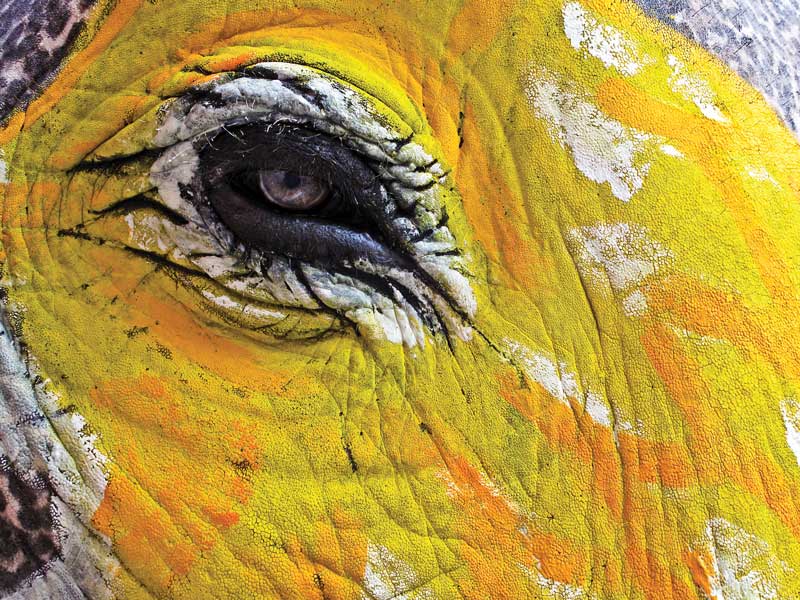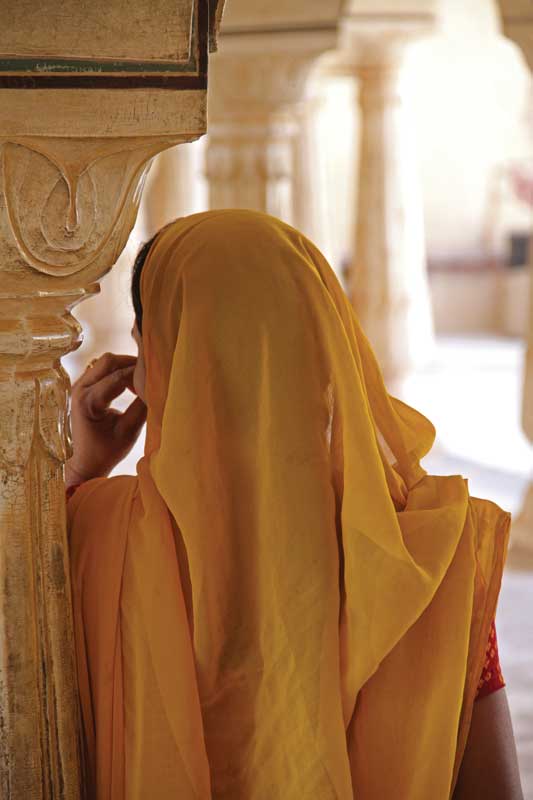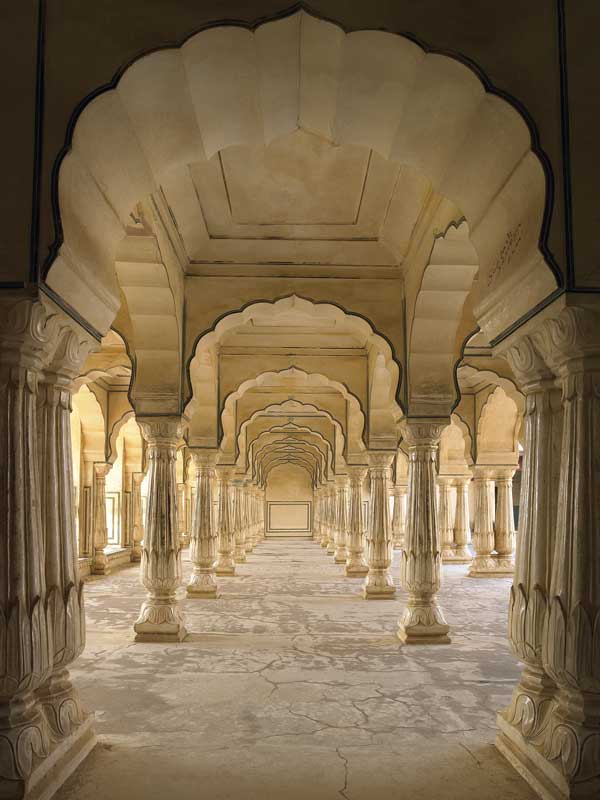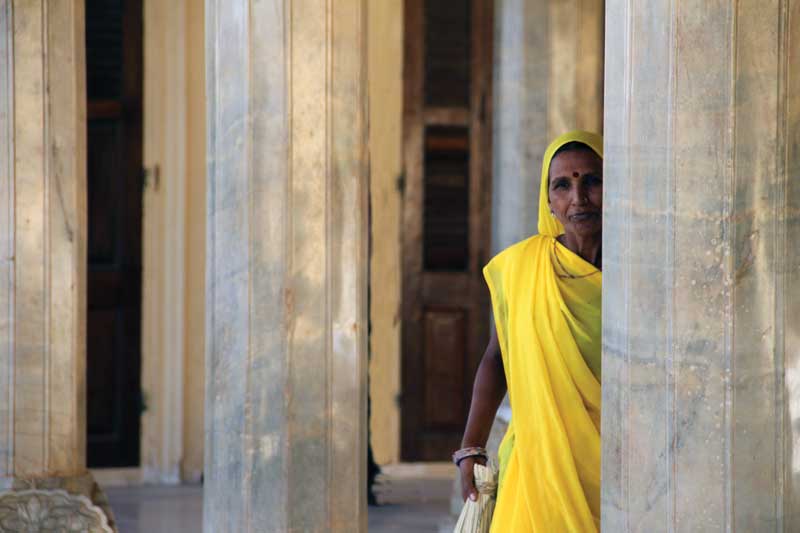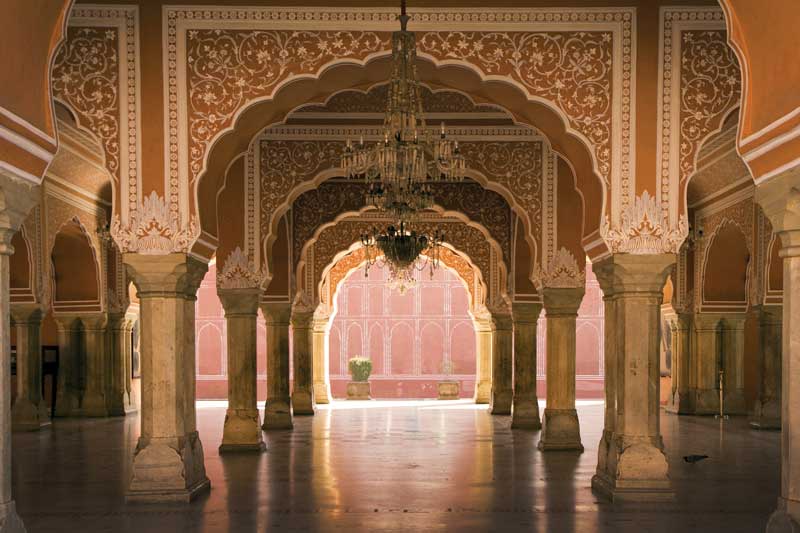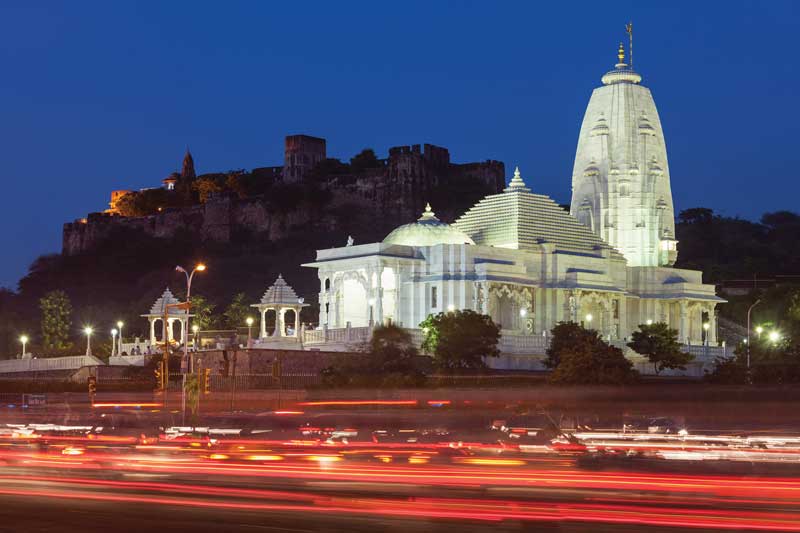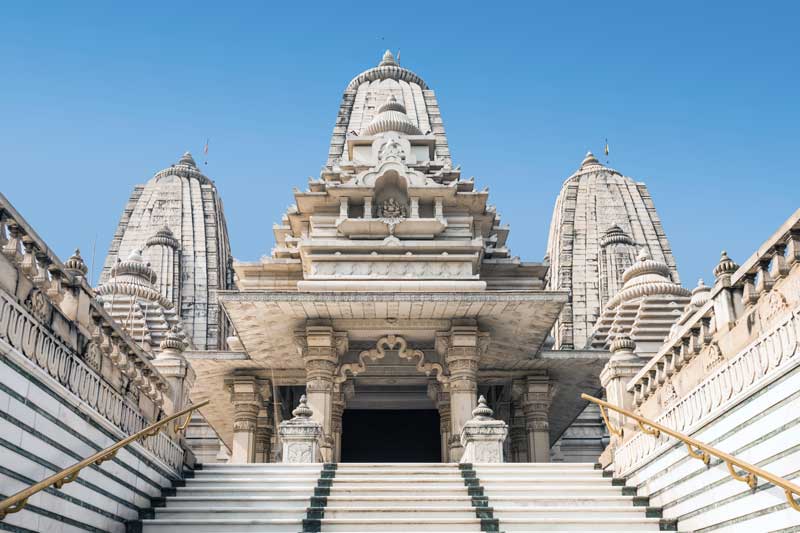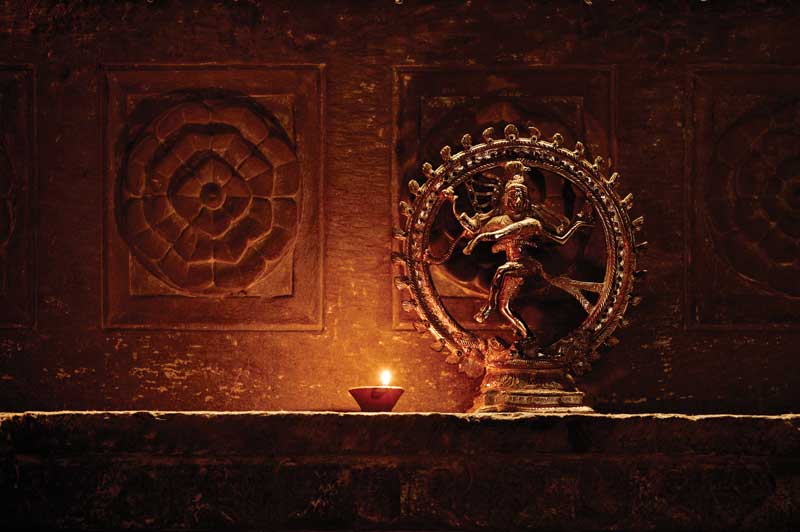Three Rajput jewels: Udaipur, Jodhpur, and Jaipur
In the turmoil of legends and historical facts, India hides is cities and fortresses that animate the Rajasthan landscape. Its mysticism seduces us; the gods infiltrate our journey; the battles stir our minds as we discover a world that astounds us at every step. Fortunately for our wandering soul, at the doors of the Thar desert, a fascinating universe opens up and leads us to the three most beautiful cities of Rajasthan: Udaipur, Jodhpur, and Jaipur.
Rajashtan is known as the state of India that once was the kingdom of the Rajput, a term which in Sanskirt means “sons of the king” (rash —raja— ‘king’ and putrá: ‘son’). This clan began its lineage in the 6th century, spreading its authority over various kingdoms in Rajashtan and northern India. The Rajput resisted Muslim incursions, although they became dependents of the Sultan of Delhi, and the Mongol Empire.
As the Mongol empire floundered in the 18th century, the region suffered from continuous attacks, and, in the beginning of the 19th century, the various Rajputs signed treaties with the British, accepting the sovergnity of the European empire in turn for local autonomy and protection from the marathas.
From the glory of the past, only a few fascinating palace remain standing to raise their walls with pride, where the rashput or maharajas still lording, occupying part of this palaces and leaving the rest to hotels or museums. Passing through the doors of these royal places, we can feel the echo from the old days, the stone lattices oscillate with the Indian women’s long eyes.
Udaipur
Nestled between the foot of the Aravalli mountains lies the ancient kingdom of Mewar. Called the “City of the Lakes”, this city, south of Rajahstan, boats a number of bodies of water, such as the Pichola, Fateh Sagar, the Udai Sagar, and the Swarup Sagar. Lake Pichola, the largest of these, is the heart of the city, a place where one can admire the palaces emerge, and where one can visit the numerous islands and the pretty docks.
Built by Pichu Banjara during the reign of Maharana Lakha around 1362, it is a mirror that refreshes the people who bathe and cleanse themselves there. Between 1743 and 1746, and isolated patch of land was built in the lake which would support of a summer palace. Known as Jag Niwas, or Palace of the Lake, it is today the site of the Lake Palace hotel.
Upon our arrival, we made our way to the Obeori Udaivilas hotel, which boats a view of the lake. Placed on a hill, this Oberoi dazzles with a superb scene. One in, we walked through a beautiful courtyard that took us to a door which takes one to the front desk, where guests check-in under a large golden copula, all the while surrounded by elegant salons.
A long hallway leads us with majesty to our rooms, wich open towards the large pool that surround the building, wich it looks like a tale from Thousand and one nights, with their domes and pavilions reflected in the water mirrors. It is a true dream for the traveler Fantasy, who vibrates with the splendor of a fable transported in time.
Afterwards, we boarded a ship in order to reach Lake Palace, formerly known as Jaw Niwas. Completed in 1746 under the rule of Maharana Jagat Singh II, this palace was worshiped by the locals and prayers were offered at dawn to Surya, the Hindu god of the Sun. This god is featured on the palaces’ walls. It is furnished with numerous column-lined patios terraces with pillars, fountains and gardens, as well as beautiful salons.
Its atmosphere inspires peace and relaxation in the midst of an Oriental splendor. The floor is a mixture of white and black marble; the walls are adorned with niches and arabesques. The palace had deteriorated until Bhagwat Singh decided to convert it into a five-star hotel, one that has seen such guests as Lord Curzon, Vivien Leigh, Queen Elizabeth II, the Sha of Iran, the King of Nepal, and Jaqueline Kennedy walk through its doors. It has also served as a film set for such productions as James Bond’s “Octopussy”, and the British television series, “The Crown Jewels.”
Our journey through Pichola Lake led us Jag Mandir, a palace that was constructed on another island, wich welcomes us with a row of stone elephants. Built between 1551 and 1652, the Maharana used it as a summer palace. We sailed through the coast, admiring the palace that rises like a gargantuan stone, dominating the landscape of the city. Near its ghats, people bathed. Nearer still, the luxurious gardens of the Leelah hotel adorned the coast.
The Udaivilas dock welcomed us with a crew of men in white garments and red turbans drawing a bindi on our foreheads – a symbol with multiple and profound meanings that is widely regarded in these regions as a “third eye” and good luck. A car drove us to the patio after this, and we sampled the exquisite local cuisine.
We entered that Maharana palace through a ramp, passing three doorsentering in a huge courtyard and leaving behind the part of the palace that operates as a hotel. Built by Maharana Udai Singh in 1559, it has been modified over the centuries and is now a series of palaces, patios, terraces, hallways and gardens. The current Maharana lives in a private chamber, then there’s the hotel and the remain part of the palace operates as a museum that harbors a vast collection of painting and furniture, as well other decorative items.
The big atrium was used for parades with elephants and horses; we entered a smaller courtyard decorated with paintings before go up through halls and terraces to admire the lake and Lake Palace. It is a real labyrinth that brings us a lot of surprises, with rooms decorated by latticed windows mirrors of elegant rooms in ornamented yards. The palace is a gem that takes us by the time, between tales and legends, among printed rashputs on the walls or the thumbnails.
We left this place dazzled by the oriental beauties that surrounded us. From there, we walked through the streets of the city to reach the temple of Jagdish, built in 1651, and representative of the maru-gujarat architecture, which features pyramidal ceilings. One feels like the gods are protecting us, the travelers, a feeling that increases as the bells chime in the distance, as people approach us with offerings.
The nights in Udaipur are fascinating. One can admire the stars shining down on the lake on the lit palaces near the water. From the Udaivilas terraces, we gathered round as the air makes the surface of the lake shimmer. In these moments of contemplation, our souls are recharged, and the long journey seems more than worthwhile.
Ranakpur
Heading north, we followed a road that crosses villages where people with fascinating features pas by us. It is a spectacle of vivid and imposing colors that glimmer under the light. We arrive at our destination, yet before we can move further we are surrounded by hungry monkeys. Once released, we reached Ranakpur, the most spectacular Jains temple in the region, dedicated to Rishabha or Adinatha, one of the 24 tirthankaras of Jainism. It dates from the 15th century.
On the outside, it looks like an elegant sanctuary on top of a hill. Its roof is adorned with Shikharas (pointed towers), domes, and copulas featuring white marble statues of elephants and seers. Crossing the entrance, one discovers a world of polished stone, each with a unique design, and the 1,444 pillars that represent scenes and legendary figures with acute detail. The doors and roofs are finely etched, each a work of art, and the place as a whole reflects the fine craftsmanship of the time.
Among a real beauty by a mystical world perpetuated on stone, here , we also found the statues of the 24 masters of Jainism, known to the world as tirthankaras. They preached the Five Principles: Ashima (no violence), Satya (veracity), Asteya (no stealing), Brahmachyara (chastity), and Aparighraha (detachment from material possesions).
Jainism focuses of control of one’s self, and the rejection of the material world. It’s motto, Parasparopaghaho Jivanam, proposes that the function of the sould is to help one another, to flee violence, respect animal life, and to elevate one’s self through mediation. Rankpur radiates this sense of peace, the manifold sculpted stones are admirable; every trail, column and ceiling, is an authentic artwork; the whole temple vibrates like a mystical music driven by the sound of bells.
Jodhpur
When we enter the “blue city,” dominates by the imposing Mehrangarh fort, we felt absorbed by the energy of a city that glimmers on its own. Jodhpur was founded in 1459 by Rao Jodha, a Rajput of the Rathore clan, rulers of a state that used to be known as Marwar. A feudal land belonging to the Mogol empire, it allied itself with the British and later joined the nation of India, despite its wish to remain an autonomies locality.
Here, we stayed at the Raas Hotel, a modern lodging located inside the ancient city, at the foot of the fort. After boarding a few rickshaws to reach it, we made our way, full-speed ahead through the streets to reach the clock tower, inside the city walls, and then back to rest in the pool of our hotel.
The next morning, blue as the tone of this city, we boarded the Jaswant Thada, built by the Maharaja Sadar Singh in 1899, in memory of his father, Jaswant Singh. It serves as cemetery for local officials of Mawar. Covered by thin styled marble sheets, it looks fascinating under the intense Indian sun. From there, we traveled to the fort, located 125 meters above the city. It was also built by Roa Jodha and finished by Jaswant Singh around 1660.
The fort astonishes us because it features and outer wall 36 meters in height, but mostly because of the beauty of each one of its precious corners. It is decorated with a vast amount of beautiful windows and balconies that have been polished to perfection. We passed through Victoria Gate and walked through a series of courtyards, palaces rooms richly decorated with mirrors, colorful glasses end golden decorations.
The local museum exhibits weapons, armor, gifts, and other luxuries of the Rajpur. Caretakers in colorful turbans make sure that all these objects are kept in optimal state. From here, one can also enjoy the view of the “blue city,” and admire the Umaid Bhawan palace in the distance. We were blown away by the impregnated energy in those stone walls transformed in art by man head and an incalculable time.
And to Umaid Bhawan palace we went. Built in 1929 and completed in 1942, it belongs to the royal family and was erected using ocher stone. Part of the edifice has been transformed into a hotel, managed by the Taj Group. It features 347 rooms in total, all decorated in an Art Deco style with pieces from the museum, and others that have been collected from the gardens, and from local safaris.
In the evening, we reposed in the main dining hall, where we were treated like royalty. We enjoyed a sumptuous dinner inside a room full of exquisite details. After, we admired the watches, china, paintings, and the impressive collection of furniture amassed by the Maharaja in the museum.
Jodhur also boasts a lively bazar, where travelers can buy all kinds of crafts, textiles, and spices. Here, one can also admire the enormous amount of cattle other sacred animals that parade through the streets. If hungry, samozas (fried bread stuffed with meat, chocolate, or fruit) can be bought at almost every corner. At night, it is best to relax at the hotel and enjoy the view of the city from one of the many hotel terraces. After walking around Mandore -invaded by monkeys and vegetation-, we experiment a plenitude that only a city with this kind of nature offers.
Jaipur
The highway, suffocated with vans and other vehicles crisscrossing the lanes along with cattle and other animals, takes us to Jaipur. It is said that in India, one does not need a license to drive; all one needs is, “good breaks, a hood horn, and good luck.” Jaipur is the “rose city,” a color that both describes is and provides it with a welcoming hue. It was founded in 1782 by the Maharaja Sawai Jai Singh, ruler of Amber. Singh left this place to create a new capital: Jaipur.
The Maharajas of Jaipur belonged to the Kachwaha clan, descendants of the god Rama. The Kachwaha culture forced them for fortify the majority of their cities and palaces. Then came the British Raj, and, after the abolition of the principality by Indira Ghandi, the Maharaja was kept simply to oversee ceremonials duties. The current Maharaja of Jaipur, Bhawani Singh, exerts a fundamentally cultural role, and keeps a private residence on one of the wings of the royal palace.
Here, we stayed in the marvelous Rajvilas hotel by Oberoi, nestled in an enchanting garden surrounded by peacocks. Inside the garden there is a temple, as well as a pool and a comfortable spa. Each group of six rooms forms a courtyard with a private patio. Guest can also stay in luxurious tents, or suites with a private pool. The salon, the restaurant, and the patios take up most of the space of the fort. It is a true jewel.
Beyond the Jal Mahal palace, in the midst of a lake, we reached the fort of Amber some 11km from Jiapur. An impressive and complex palace, it was built during the reign of the Raj Man Singh, commander of the Akbar army in 1592. Amber experienced drastic changes during the next 150 years, that is, until the Kachwahas made it their capital city, at the foot of the Jaigarh Fort, located on top of a hill overlooking Amber.
We rode on an elephant to reach the palace, and admired the wall and the Maotha Lake. Once we descended, we entered through the Suraj Pol gate to discover a great patio named Jaleb Chowk. Beyond this lay the palace of the Kachwaha clan, one dedicated to Shiva, manifestation of the goddess Kali, who stands at her side. From there, we walked upstairs to the second floor, towards the public called, Divan-i-Am, an open theater of sorts, divided into three parts, and featuring double rows of columns built with arsenical bronze.
Heading south, we find the grand Ganesh Pol entrance, adorned with images of the elephant god Ganesh, as well as frescoes and mosaics. This door leads to the private lodgings of the Maharaja. In the past, its lattice windows called “jali” allowed women to look out without being seen. At the Divan-i-khas or the Hall of Royal Council, we found a luxurious room decorated with white marble and mosaics, in the roof as well as in the walls. Another room, the Shish Mahal, was completely covered in mirrors – another property of the Maharani.
The Suck Mahal, or Palace of Pleasure, features ivory doors and sandalwood on the floor. It was said that water would trickle from the walls. From there, we headed to Hawa Mahal, or the “palace of the winds,” built in 1799. It is an extension of the palace, known as Zenana, or the “chamber of women.” It allowed them to observe daily life unfold in the city without being observed. It is an indescribable pleasure and privilege to walk around these places that in the ancient past were completely private, to witnesses the perfection of its present.
This edifice has five floors arranged in a pyramid scheme, of red and pink hues, with a total of 953 windows that allow the air to flow in and cool the entire building, even during the summer. The structure reminds one of a peacock’s tail – an animal that is greatly admired in India, because it is sacred. The access to the upper floors is possible through ramps. This place is one the symbols of Jaipur and reveals an unequaled exquisiteness.
After, we visited the Janta Mantar, the famous observatory built by Jai Singh in 1728, a lace composed of numerous sculptured monuments that allowed the people at the time to study the evolutions of shadows created by the sun in order to study time and the passing of the seasons. The most impressive structure is a 27m tall column whose shadow moves 4 meters every hour. All of these structures still function as intended.
We also visited the Pink City on bike to feel the atmosphere of the commercial area with their shops of jewelry, turbans, clothing, thumbnails and a much more. To be in Jaipur is an invitation to feel like a maharaja, enjoying the luxury of the pool and gardens at the Rajvilas.
As the day came to a close, we darted to the Birla Mandir, a place built completely with white marble, and featured the typical long and pointed copula. Here, we removed our shoes, and carefully walked to the altar of the god Vishnu and his wife, Lassi. At 7:00 PM, the Aarti ceremony started, and the bells began to chime. The priest blessed us, and we all prayed with the palms of our hands pressed together.
Aarti comes from the Vedic ritual of fire, or Homa. The flowers represent the earth (firmness), water represents fluidity, and the lamps represent heat; while the incense represents a purified state of mind. Hence, all the facets of creation are symbolically offered to the gods through the Aarti ceremony. A unique shiver ran our body through the intensity of the chants, wich lasted for about 15 startling minutes.
India is a mystical poem, where Rajasthan offers many treasures and hidden expressions, unknown for many. Just to mention a few examples, look at the golden city of Jaisalmer in the desert, as well as the city of Bikaner, the temple of rats, Mount Abbu, Ranthambore and a lot of different forts.
We live a superb adventure walking through these three jewels of palaces and temples, maharaja life and mystical ceremonies. We really felt like a rashput for a short trip time, and we even traveled to the past. At the same time, we discover lavish monuments and stayed in real palaces. The wealth invades the soul for being at those places, a gift that only India can offer, as nowhere else in the world.
Text: Patrick Monney ± Photo: Patrick Monney / © Minyun Zhou / © Rafał Cichawa / © Byelikova / © Sergeychernov Th Js / Gaisano / © Marina Pissarova / © Pzaxe / © Anthony Brown / © Dbyjuhfl / © Takepicsforfun / © Ozphotoguy / © Nniud / © Saiko3p / © Luciano Mortula / © Xantana / © Dhammabum /© Federico Donatini / © Erickn35 / © Jan Skwara / © Pniesen / © Steve Allen / © Suronin / © Xantana / © Socrates / © Donyanedomam / © Ryszard Laskowski / © Dmitry Rukhlenko / © Michelleliaw

